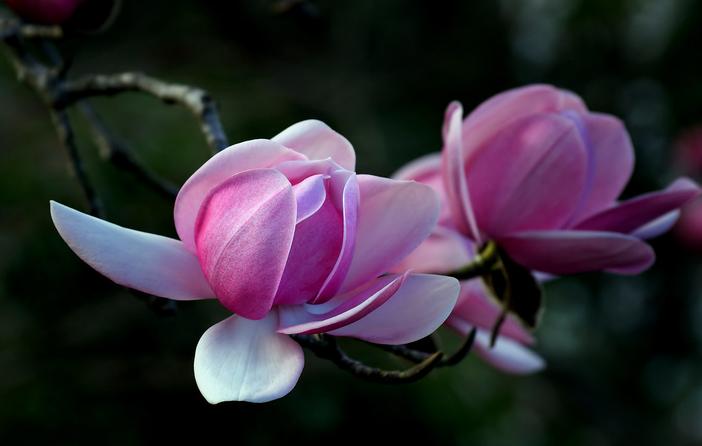Campbell’s Magnolia
(Magnolia campbellii)
Campbell’s Magnolia (Magnolia campbellii)
/
/

Bernard Spragg. NZ
CC0 1.0
Image By:
Bernard Spragg. NZ
Recorded By:
Copyright:
CC0 1.0
Copyright Notice:
Photo by: Bernard Spragg. NZ | License Type: CC0 1.0 | License URL: https://creativecommons.org/publicdomain/zero/1.0/ | Uploader: Bernard Spragg | Publisher: Flickr













Estimated Native Range
Summary
Magnolia campbellii, commonly known as Campbell’s Magnolia, is a deciduous tree native to the temperate broadleaf and mixed forests of the Himalayas into South Central China. It can reach heights of 40-50 feet (12-15 meters) with a spread of 30-40 feet (9-12 meters). This species is renowned for its large, showy flowers that are typically pink at the base, fading to white at the tips, and can bloom in late winter to early spring before the leaves emerge, making them particularly striking against the bare branches.
Campbell’s Magnolia is valued for its spectacular floral display and is often used as a feature tree in large gardens and parks. It requires a sheltered position to protect the early blooms from late spring frosts, which can damage flowers and affect flowering success. The tree prefers deep, rich, and well-drained soil with consistent moisture. It thrives in full sun to partial shade and benefits from a location that provides some protection from strong winds. While young trees are slow to mature and may take many years to flower, the breathtaking blooms are worth the wait. Cultivation challenges include ensuring adequate space for growth and providing the necessary soil conditions for optimal health.CC BY-SA 4.0
Campbell’s Magnolia is valued for its spectacular floral display and is often used as a feature tree in large gardens and parks. It requires a sheltered position to protect the early blooms from late spring frosts, which can damage flowers and affect flowering success. The tree prefers deep, rich, and well-drained soil with consistent moisture. It thrives in full sun to partial shade and benefits from a location that provides some protection from strong winds. While young trees are slow to mature and may take many years to flower, the breathtaking blooms are worth the wait. Cultivation challenges include ensuring adequate space for growth and providing the necessary soil conditions for optimal health.CC BY-SA 4.0
Plant Description
- Plant Type: Tree
- Height: 40-50 feet
- Width: 30-40 feet
- Growth Rate: Moderate
- Flower Color: Pink, Red, White
- Flowering Season: Winter, Spring
- Leaf Retention: Deciduous
Growth Requirements
- Sun: Full Sun, Part Shade
- Water: Medium
- Drainage: Slow, Medium, Fast
Common Uses
Bee Garden, Bird Garden, Butterfly Garden, Deer Resistant, Fragrant, Showy Flowers
Natural Habitat
native to the temperate broadleaf and mixed forests of the Himalayas into South Central China
Other Names
Common Names:
Scientific Names: , Magnolia campbellii, Magnolia campbellii subsp. mollicomata, Magnolia campbellii var. mollicomata, Magnolia mollicomata, Magnolia campbellii var. alba, Yulania campbellii,
GBIF Accepted Name: Magnolia campbellii Hook.f. & Thomson